Description
Name in North American Boletes: Leccinum atrostipitatum AND Leccinum testaceoscabrum
Genus: Leccinum
Species: versipelle
- Species 2: atrostipitatum
- Species 3: testaceoscabrum
Common Name: Orange Birch Bolete
Tells: Orange cap ages to pinkish tan & has tissue bits on the edge. White cap flesh stains red (esp. by stem), resolving to purple- or blackish-gray.
Other Information: Likes birch best, but also beech and oak. Salt & pepper stem may have green-blue stains by base. White-buff pores age brownish & often bruise olive- to dark brown.
Science Notes: DNA tests merged two species to create this one: L. atrostipitatum and L. testaceoscabrum. The combination was then renamed “versipelle” by the learned, a European name that was presumably chosen to cause confusion among those who are not. Note that atrostipitatum and testaceoscabrum had different reported reactions to iron salts, turning bluish gray and bright green respectively. See this Article on the Red-Cap Leccinum Taxonomy Mess for more information, and don’t be surprised if the merger turns out to be applicable only to European species with something else entirely being proper for North America.
Edibility: Variable. Atrostipitatum was considered a good edible, but some reported GI distress from testaceoscabrum. Now that the two are merged you’ll have to judge for yourself.
CHEMICAL TESTS:
- NH4OH (Ammonia): Cap flesh turns bluish.
- KOH: No data.
- FeSO4 (Iron Salts): Cap flesh turns bluish-gray.
Links:
 |
577 |  |
0 |  |
197 |  |
271 |

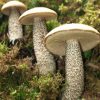

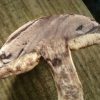

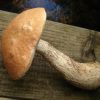
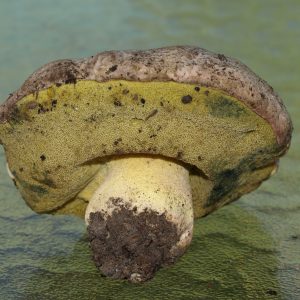
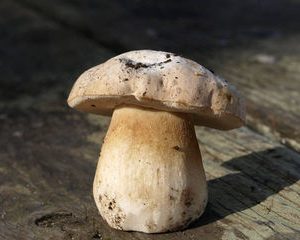
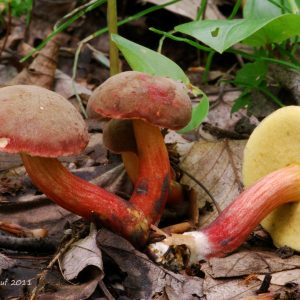
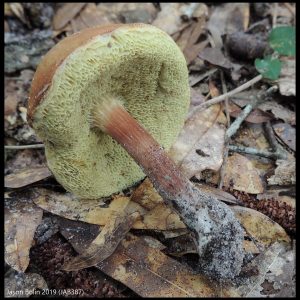
Got something to discuss?